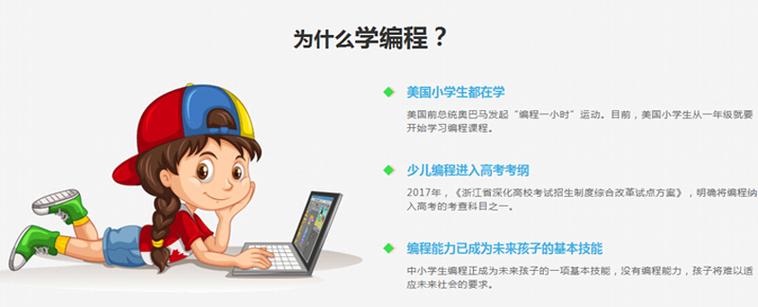The Flask Mega
- The Flask Mega 推荐度:
- 相关推荐

The Flask Mega
To learn Flask,I start to follow MiguelGrinberg’s 《The Flask Mega-Tutorial》 .
Install Python
- python –version = 3.6.4 (different from tutorial’s 3.5.2)
Install Flask
- Flask –version = 1.0.2
Project Root
- ~ / Flask_microblog
Virtual Environment
- pipenv –python 3.6.4 (executed under Flask_microblog/)
- tutorial’s:
$ python3 -m venv venv virtualenv venv(Python older than 3.4, including 2.7 )
- tutorial’s:
pipenv
- pipenv usage
$ pipenv
Usage: pipenv [OPTIONS] COMMAND [ARGS]...Options:--where Output project home information.--venv Output virtualenv information.--py Output Python interpreter information.--envs Output Environment Variable options.--rm Remove the virtualenv.--bare Minimal output.--completion Output completion (to be eval'd).--man Display manpage.--three / --two Use Python 3/2 when creating virtualenv.--python TEXT Specify which version of Python virtualenv should use.--site-packages Enable site-packages for the virtualenv.--version Show the version and exit.-h, --help Show this message and exit.Usage Examples:Create a new project using Python 3.6, specifically:$ pipenv --python 3.6Install all dependencies for a project (including dev):$ pipenv install --devCreate a lockfile containing pre-releases:$ pipenv lock --preShow a graph of your installed dependencies:$ pipenv graphCheck your installed dependencies for security vulnerabilities:$ pipenv checkInstall a local setup.py into your virtual environment/Pipfile:$ pipenv install -e .Use a lower-level pip command:$ pipenv run pip freezeCommands:check Checks for security vulnerabilities and against PEP 508 markersprovided in Pipfile.clean Uninstalls all packages not specified in Pipfile.lock.graph Displays currently–installed dependency graph information.install Installs provided packages and adds them to Pipfile, or (if noneis given), installs all packages.lock Generates Pipfile.lock.open View a given module in your editor.run Spawns a command installed into the virtualenv.shell Spawns a shell within the virtualenv.sync Installs all packages specified in Pipfile.lock.uninstall Un-installs a provided package and removes it from Pipfile.- Locate the project:
$ pipenv --where
/Users/kennethreitz/Library/Mobile Documents/com~apple~CloudDocs/repos/kr/pipenv/test- Locate the virtualenv:
$ pipenv --venv
/Users/kennethreitz/.local/share/virtualenvs/test-Skyy4vre- Locate the Python interpreter:
$ pipenv --py
/Users/kennethreitz/.local/share/virtualenvs/test-Skyy4vre/bin/python- Install packages:
$ pipenv install
Creating a virtualenv for this project...
...
No package provided, installing all dependencies.
Virtualenv location: /Users/kennethreitz/.local/share/virtualenvs/test-EJkjoYts
Installing dependencies from Pipfile.lock...
...To activate this project's virtualenv, run the following:
$ pipenv shell- Install a dev dependency:
$ pipenv install pytest --dev
Installing pytest...
...
Adding pytest to Pipfile's [dev-packages]...- Show a dependency graph:
$ pipenv graph
requests==2.18.4- certifi [required: >=2017.4.17, installed: 2017.7.27.1]
- chardet [required: >=3.0.2,<3.1.0, installed: 3.0.4]
- idna [required: >=2.5,<2.7, installed: 2.6]
- urllib3 [required: <1.23,>=1.21.1, installed: 1.22]- Generate a lockfile:
$ pipenv lock
Assuring all dependencies from Pipfile are installed...
Locking [dev-packages] dependencies...
Locking [packages] dependencies...
Note: your project now has only default [packages] installed.
To install [dev-packages], run: $ pipenv install --dev- Install all dev dependencies:
$ pipenv install --dev
Pipfile found at /Users/kennethreitz/repos/kr/pip2/test/Pipfile. Considering this to be the project home.
Pipfile.lock out of date, updating...
Assuring all dependencies from Pipfile are installed...
Locking [dev-packages] dependencies...
Locking [packages] dependencies...- Uninstall everything:
$ pipenv uninstall --all
No package provided, un-installing all dependencies.
Found 25 installed package(s), purging...
...
Environment now purged and fresh!- Use the shell:
$ pipenv shell
Loading .env environment variables…
Launching subshell in virtual environment. Type 'exit' or 'Ctrl+D' to return.
$ ▯Flask application instance
Flask_microblog / app / __init__.py
from flask import Flaskapp = Flask(__name__)from app import routesNote:
- when a
__init__.pyis added into a directory, the directory would become a pythonpackage, thus can be imported by other module. - Thus, the app folder become a package, and the inside instance ‘app’ can be imported by:
from app import app
routes.py
Flask_microblog / app / routes.py: Home page route
from app import app@app.route('/')
@app.route('/index')
def index():return "Hello, World!"Main application module
from app import app- The Flask application instance is called
appand is a member of theapp package. The from app import app statement imports theapp variablethat is a member of theapp package.
Structure (initial)
Flask_microblog
├── app
│ ├── __init__.py
│ ├── routes.py
│ └── templates
├── microblog.py
├── Pipfile
└── Pipfile.lockflask run
(venv) $ export FLASK_APP=microblog.pyExecute this command under the top-level directory, where microblog.py is placed, i.e. Flask_microblog / microblog.py .
最新文章
- linux的s权限和t权限
- cocos Creator打包
- MindSpore实现语音指令识别(迁移tf入门教程)
- Platform Builder
- linux下生成dump文件方法及设置
- Linux下Mysql启动、关闭、重启指令
- 关于微软IIS7安全性
- APP 专项测试之兼容性测试
- SAR成像系列:【3】合成孔径雷达(SAR)的二维回波信号与简单距离多普勒(RD)算法 (附matlab代码)
- 如何自学Python爬虫,python爬虫快速入门教程
- Shiro和SpringSecurity
- CLion破解注册
- Spring @Scheduled定时任务的fixedRate,fixedDelay,cron的作用和不同
- vc++ C函数atoi和itoa的用法总结(转载)
- YOLOv3算法
- 【Spring Boot JPA】ManyToOne OneToMany学习笔记
- 通讯录——C语言实现
